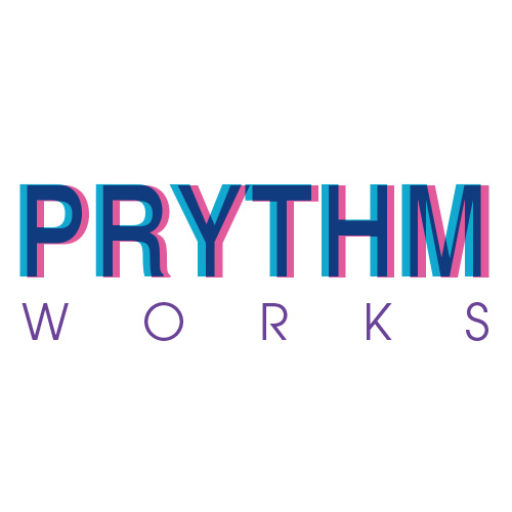手順1.liquidファイルをもとにjsonファイル作成
まずは肩慣らしに「Product」のproduct.json
まず、これが、とあるテーマのproduct.liquid
【「カスタマイズ」画面】
【liquidファイル】
{% comment %}
The contents of the product.liquid template can be found in /sections/product-template.liquid
{% endcomment %}
{% section 'product--product-template' %}
<div class="max-w-6xl mb-8 md:mb-14 mx-auto px-6">
<div id="shopify-product-reviews" data-id="{{product.id}}">{{ product.metafields.spr.reviews }}</div>
</div>
<style>
.spr-container {
padding: 0;
}
.spr-header {
width: 100%;
}
.spr-header-title {
text-align: left;
font-size: 16px;
font-weight: 700;
padding-bottom: 12px;
border-bottom: 2px solid #707070;
}
.spr-summary {
display: flex;
font-size: 14px;
width: 100%;
}
.spr-summary > .spr-starrating {
display: none;
}
.spr-summary-caption {
flex-grow: 1;
text-align: left;
}
.spr-headerspr-review-header-title {
font-size: 14px;
}
.spr-review-header-byline {
font-style: normal;
width: 100%;
}
.spr-review-content {
padding-top: 10px;
border-top: 1px solid #EEEEEE;
}
.spr-button {
background-color: #333!important;
font-size: 14px!important;
}
@media (min-width: 768px) {
.spr-header {
display: flex;
width: 100%;
padding-bottom: 12px;
border-bottom: 2px solid #707070;
}
.spr-header-title {
width: 120px;
margin: 0 15px 0 0;
padding-bottom: 0;
border-bottom: 0px solid #707070;
}
}
</style>
{% section 'top--heading' %}
{% section 'product-recommendations' %}
↓
①不要なhtmlコードをよける(どっか別のテキストエディタにコピーしておく)
{% section 'product--product-template' %}
{{ product.metafields.spr.reviews }}
{% section 'top--heading' %}
{% section 'product-recommendations' %}
JSONにhtmlコードは記述できないので、ここでよけたhtmlコードは、呼び出しているsectionファイルに移動するか、新たにsectionファイルとして作成する必要がある。
{{ product.metafields.spr.reviews }}これだけはセクションを呼び出しておらず、このテンプレート内でproductの登録情報を呼び出している箇所であった。これもJSON変換時にセクションとして追加することにする。
↓
②sectionを呼び出している要素をJSONに書き換える。
上記3つのsectionを呼び出している要素をJSONに書き換える。
構造化ルールは、こちらの参考資料を一読すると、理解できる。
【Shopify公式devページ】JSON templates

Shopify Uniteで刷新されたLiquidのJSON templatesを理解する

{
"sections": {
"main": {
"type": "product--product-template",
"settings": {}
},
"top-heading": {
"type": "top--heading",
"settings": {}
},
"metafields-spr-reviews": {
"type": "metafields-spr-reviews",
"settings": {}
},
"product-recommendations": {
"type": "product-recommendations",
"settings": {}
}
},
"order": [
"main",
"top-heading",
"metafields-spr-reviews",
"product-recommendations"
]
}
もともとあったproduct.liquidは消せば、新規で作成したproduct.jsonに完全に置き換わる。
【「カスタマイズ」画面】は以下のようになった。
metafields-spr-reviewsが、セクションの一部として明確に追加される形になった。
強敵「ホームページ」のindex.json
まずは「ホームページ」をつかさどるテンプレート、
index.liquidの形は、ほぼどのテーマでも
{{ content_for_index }}である!以上!
これを↓のように書き換える必要があーーる!
index.jsonの形(Dawnの例)
{
"sections": {
"image_banner": {
"type": "image-banner",
"blocks": {
"heading": {
"type": "heading",
"settings": {
"heading": "Talk about your brand"
}
},
"button": {
"type": "buttons",
"settings": {
"button_label_1": "Shop all",
"button_link_1": "shopify:\/\/collections\/all",
"button_label_2": ""
}
}
},
"block_order": [
"heading",
"button"
],
"settings": {
"desktop_text_box_position": "flex-end"
}
},
"featured_products": {
"type": "featured-collection",
"settings": {
"title": "Featured products"
}
},
"image_text": {
"type": "image-with-text",
"blocks": {
"heading": {
"type": "heading",
"settings": {}
},
"text": {
"type": "text",
"settings": {}
},
"button": {
"type": "button",
"settings": {}
}
},
"block_order": [
"heading",
"text",
"button"
],
"settings": {}
}
},
"order": [
"image_banner",
"featured_products",
"image_text"
]
}
index.jsonにおいては、書き換えるというか別物やがなあんさんこれ、、これしかしこれ。。
そもそも、JSONの記述は { } の入れ子構造を間違うとエラーを起こすので、直にコードを書いているとかなり繊細な作業になる。
そこで、以下のようなJSONを簡単に生成できるWebツールを使用するとコード記述にエネルギーを使わなくてよいので簡単だ。
JSON Editor

左にJSON、右にその構造をツリー形式で表現してくれており、どちらをいじっても一方に同期される。
本来割くべき構造の部分だけにエネルギーを使って、生成されたJSON自体はコピペして終わりだ。
さて話を戻して、
index.liquidのときのすっきりしていた情報、あれをいったいどうしたらJSON形式にできるのか!
僕はこうした。
上記、管理画面「カズタマイズ」で見たときの、JSON形式にする前の(1.0のときの)、index.liquidで作成したセクションの構造である。
1.0ではセクションはあくまで「ホームページ」用に作成されるべきものであり、「カスタマイズ」で追加、並び替え、登録を行った情報は、ShopifyのストアのDBに保管される。
今回、JSONになることで、「ホームページ」に使用できるセクションをJSONで明示しておく必要があるため、「カスタマイズ」で確認できるセクションをすべてJSONに記述する。
{
"sections": {
"top-mainvis": {
"type": "top-mainvis",
"settings": {}
},
"top-heading": {
"type": "top-heading",
"settings": {}
},
"top-brand-pickup": {
"type": "top-brand-pickup",
"settings": {}
},
"top-column": {
"type": "top-column",
"settings": {}
},
"top-hero-slideshow": {
"type": "top-hero-slideshow",
"settings": {}
},
"top-collection": {
"type": "top-collection",
"settings": {}
},
"top-news": {
"type": "top-news",
"settings": {}
},
"top-original-button": {
"type": "top-original-button",
"settings": {}
},
"top-pickup-collection": {
"type": "top-pickup-collection",
"settings": {}
},
"top-ranking-collection": {
"type": "top-ranking-collection",
"settings": {}
},
"top-youtube": {
"type": "top-youtube",
"settings": {}
}
},
"order": [
"top-mainvis",
"top-collection",
"top-original-button",
"top-heading",
"top-news",
"top-column",
"top-pickup-collection",
"top-ranking-collection",
"top-hero-slideshow",
"top-brand-pickup",
"top-youtube"
]
}この時点では、セクションの表示/非表示をつかさどるJSON情報はない。
また、セクションのブロック最大数情報もない。
ひとまずindex.jsonを設置するための、最低限の記述のみ。
JSON生成ツールで見ても、sectionとorderの数が一致しているので、これでShopifyにテンプレートファイルとして認識はしてもらえる。
骨は折れるが、わりと単調な作業なので、消費するのは集中力と時間のみ。
この作業中に、突発で別の作業が入ってこないことを祈って、集中力を保ってこれのみの作業をしましょう。
のちに「カスタマイズ」画面でページごとにセクションの複製や並び替えをする
のちに「カスタマイズ」画面でページごとにセクションの複製や並び替えをすることにして、注意が必要です。
「カスタマイズ」画面でそうした作業を行った際に、バックエンドでJSONファイルのorder情報(並び順情報)が動的に変更されてしまうのです。
なので、管理画面で視覚的作業でこうした変更をおこなったあとは、必ずテーマファイルをローカルにダウンロードして、templateディレクトリを最新の状態に更新するようにしましょう。
GithubをShopifyに接続している場合は、Shopifyの「カスタマイズ」でセクションの編集をすると、Github側で以下のように表示されます。

なので、当然Github側からプッシュをしようとすると、
! [rejected] [ブランチ名] -> [ブランチ名] (fetch first)
error: failed to push some refs to 'https://github.com/[Githubアカウント]'とエラーを返されます。
「リモートのファイルにローカルのファイルより最新版があるら、そのファイルにpushできないですよ」ということみたいです。
なのでこの場合、一度
git fetch
git pullを行って、ローカルに最新のJSONファイルをプルしてからプッシュすればエラーなくアップロードできます。







